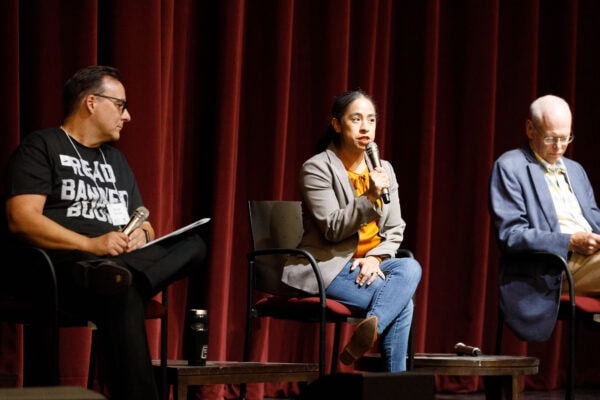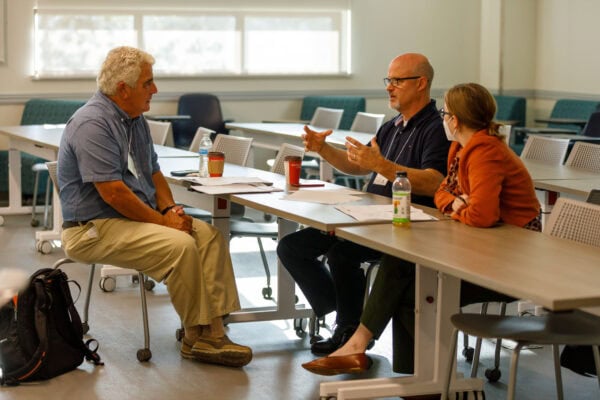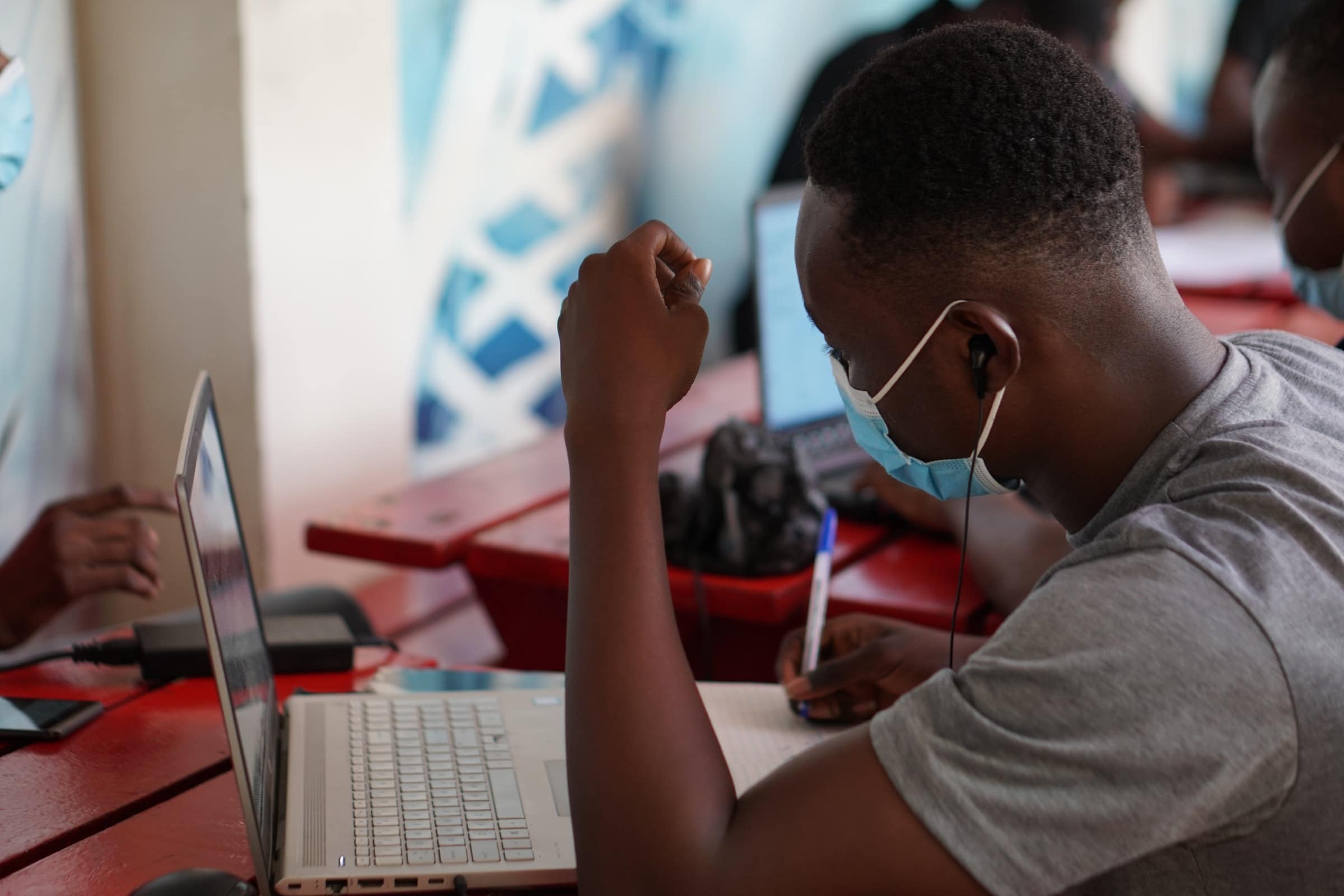Remember that first class you taught? Mine was an evening US survey course I taught as a graduate student to a group of mostly nontraditional students at the University of South Carolina. New and nervous, I spent my first 75-minute lecture racing through Reconstruction, both eager and anxious to convey all that the textbook told about the welter of plans, people, and strategies of the postwar period.

Marisa B. Pérez-Díaz, the District 3 State Board of Education member, discussing “The State of History and Social Studies Education in Texas” with Michael Boucher (Texas A&M Univ.–San Antonio) and Walter Buenger (Texas State Historical Association and Univ. of Texas at Austin). LeeAnn Gardner
It did not go well. The students were shell-shocked, I was exhausted, and though I managed to unfold every point of Lincoln’s 10 percent plan, few could possibly have understood its meaning. I had arrived at that miserable, memorable moment armed with the finest of professional and professorial models. I understood pedagogy in theory, but I still had much to learn about real-world teaching, confidence, and finding my own voice in the classroom.
Nearly 20 years into my teaching career, the excitement of education persists, and most of that newbie nervousness is gone. I’ve refined and reworked my introductory class—now inquiry oriented, textbook-free, and stuffed with primary sources—a dozen times. I know the material cold. The course is on rails.
Or so I thought. Two days spent in San Antonio, Texas, this past September have me rethinking everything once again. Organized by AHA staff members Julia Brookins and Rachel Wheatley in coordination with Bill Bush (Texas A&M Univ.–San Antonio), the 2022 Texas Conference on Introductory History Courses brought together educators from across the state and beyond to discuss the place, purpose, and mechanics of introductory history courses in the college curriculum. After meeting online in 2020 and 2021, historians and teachers were happy to gather in person at Texas A&M University–San Antonio. The event provided a wonderfully collegial, curious, and good-natured discussion of achievements, challenges, and opportunities in the postpandemic classroom.
Two days spent in San Antonio, Texas, this September have me rethinking everything once again.
The AHA has long recognized the importance of introductory courses. Held annually since 2015, when it was originated by then Teaching Division Council member Trinidad Gonzales (South Texas Coll.), the Texas Conference attracts historians teaching in private and public institutions, community colleges, liberal arts colleges, regional publics, research universities, high schools, and more. The insights shared by attendees have transformed Texas classrooms, spurred broader conversations, and informed much of the work that the AHA’s Teaching Division does to promote the discipline.
Such discussions take on greater significance given findings by the John N. Gardner Institute for Excellence in Undergraduate Education, which reveal the make-or-break stakes of what we do. Negative outcomes in gateway courses such as introductory history courses—including low grades, incompletes, and withdrawals—disproportionately affect first-generation students and students of color. Worse, students who perform poorly in these classes drop out from higher education altogether at higher rates than their peers. The AHA has worked to address these inequities through the History Gateways initiative, created in 2017 in conjunction with the Gardner Institute. Here, history faculty from around the United States have worked with institutional research teams, Gardner mentors, and AHA staff to develop classroom strategies for improving the learning experience and outcomes for students and teachers alike.
In San Antonio, our discussions centered on understanding those stakes and practicing that commitment. More than one hundred educators took part in the two-day conference, enough bright minds to promote both a wide range of viewpoints and an intimacy that carried conversations over from presentations to meals to breakout groups. With attendees bringing insights from our own courses, conducted amid the clamor of state and national battles over the future of history and social studies education, the agenda was full.
This is a fraught time for history and for Texas teachers in particular. Just two weeks before we met, the Texas State Board of Education voted to postpone revision of the state’s K–12 social studies standards in light of controversies stemming from the state’s 2021 legislation banning critical race theory in schools. The freedom to learn remains under threat, all of us in attendance understood, and the conference sessions discussed these contests and strategies at the national and state levels. Valuable presentations on workforce education, local and public history resources, learning communities, and oral history rounded out the panel portion of the conference. These sessions demonstrated both innovation and commitment to classroom achievement and concerns that best practices and professional excellence are under attack.
The Texas Conference’s distinguishing activity remains its intensive breakout discussions.
Exciting as these presentations were, the Texas Conference’s distinguishing activity remains its intensive breakout discussions, modeling the engagement, debate, and creative thinking we wish to see in our own classrooms. By our third hour, attendees had separated into groups, charged with identifying goals and purposes for our courses and challenged to consider how those matched up with student needs and aims. Graduate students, K–12 teachers, and college faculty put their heads together to consider questions common to all of our classrooms: What do students want? What do instructors want? How can we align these goals and achieve them together? How can instructors balance content mastery and skills practice? How might we address students’ struggles and play to their strengths?

Small-group discussions like this one facilitated by Daniel McInerney (Utah State Univ.) are at the heart of the Texas Conference on Introductory History Courses. LeeAnn Gardner
Those same questions necessarily animated the afternoon’s topical breakouts, where discussants considered such diverse issues as student assessment, online teaching, and the use of GIS methods. Content-based sessions focused on Mexican American history, gender, African American history, US history, Texas history, and world and Western civilization. There, too, thoughtful conversation and debate arose. How might instructors embed Mexican American history in the American history curriculum? What does innovation—flipped classrooms, collaborative projects, digital methods—in the history classroom actually look like? And how might it practically and realistically address student needs in our courses? Finally, the conference featured an assignment charrette, an extraordinary opportunity for colleagues to share constructive feedback on new and old assignments. Here, teachers submitted assignments for precirculation and review and then gathered in small groups to discuss, critique, and offer suggestions for improvement. Participating this time as a facilitator, I had the chance to consider role-playing the American Revolution, book reviews, and autobiography; offer my insights; and, more importantly, take these ideas back home for potential incorporation into my own courses. (Those curious about the charrette format can find two of them, on assignments and grading writing, at the 2023 AHA annual meeting in Philadelphia.)
These sessions encapsulated the Texas Conference experience for me: refreshingly honest conversations about how to narrow the gap between pedagogy in theory and the reality we encounter when we walk into the classroom or log in to online courses each day. I came away thankful for the chance to talk in good faith with colleagues of diverse backgrounds and experiences who shared a common desire to make the introductory course a gateway, not a dead end. This was the best sort of being in deep.
As for my own introductory US history course, for the fall of 2023, I’m all in for flipped and project focused. How could I do otherwise? The risks of going wrong lurk always, but the rewards of seeing students light up with questions, insights, counterarguments, or collegial understanding can’t be matched.
This work is licensed under a Creative Commons Attribution-NonCommercial-NoDerivatives 4.0 International License. Attribution must provide author name, article title, Perspectives on History, date of publication, and a link to this page. This license applies only to the article, not to text or images used here by permission.


